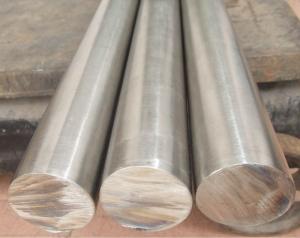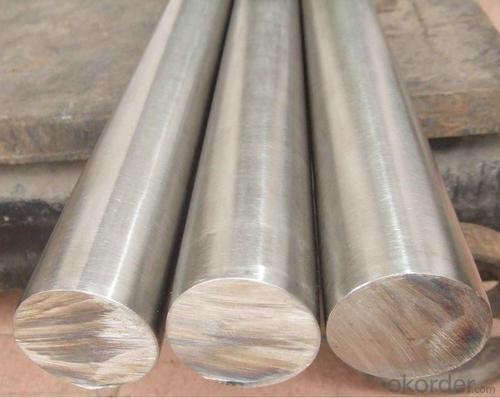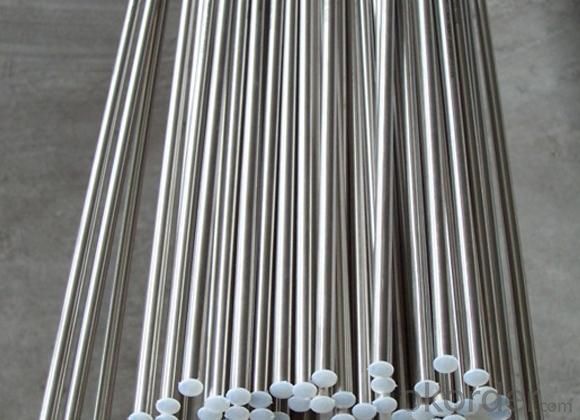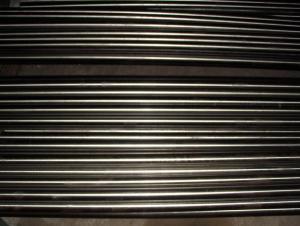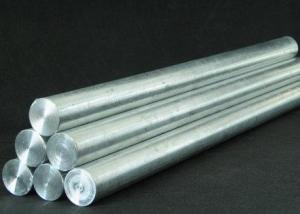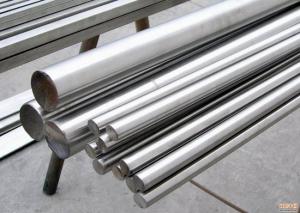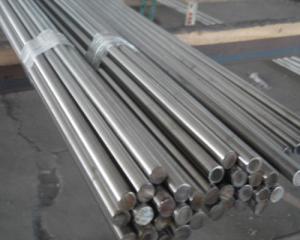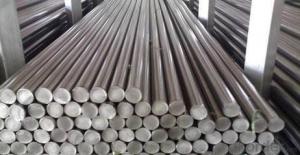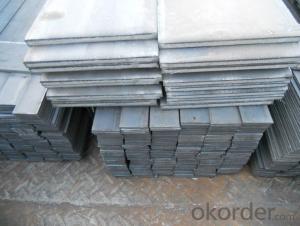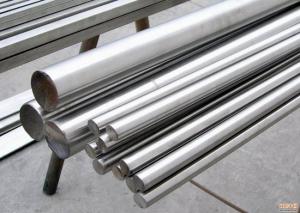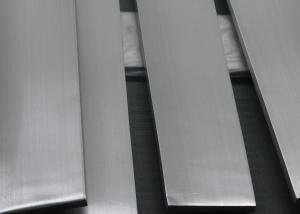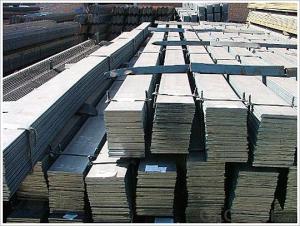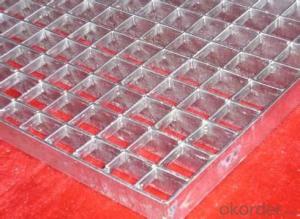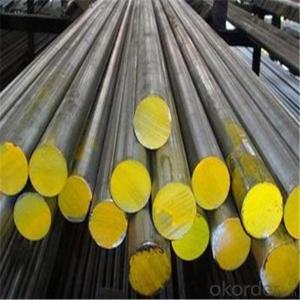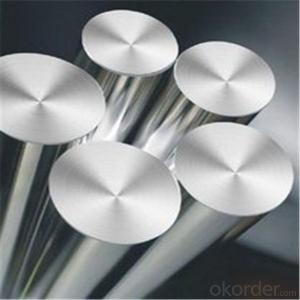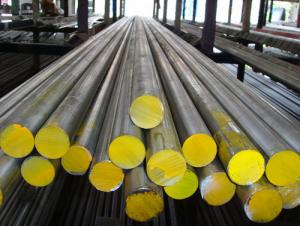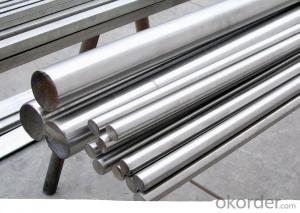Stainless Steel Bright Bar
- Loading Port:
- Tianjin Port
- Payment Terms:
- TT or L/C
- Min Order Qty:
- 25MT m.t.
- Supply Capability:
- 4000MT Per Month m.t./month
OKorder Service Pledge
OKorder Financial Service
You Might Also Like
Introduction of Stainless Steel Bright Bar:
Stainless steel is a production which not easy rust, acid resistance and corrosion resistance, so it is widely used in light industry, heavy industry, daily necessities and the decoration industry.my company long-term supply stainless steel porducts including: stainless steel sheet, stainless steel coil and stainless steel tube.
Details of Stainless Steel Bright Bar(Cold Drawing Polished):
*DIA 10mm to 130mm
*FORGE
*DIA 130mm to 300mm
*GB1220,ASTM A 484/484M, EN 10060/ DIN 1013
*DIA 3mm to 60mm
Main operation | Main steel grade | Available size(mm) | Monthly capacity(mt) | Length(mm) | |
OEM | Stainless steel | 40~500 | 1500 | 4000~8000 | |
Hot | 303 303Cu 304/L 310S 316/L 321 416 420 | 12 ~200 | 3000 | 4000~7000 | |
17-4PH WLA510 | 19~110 | 2000 | 4000~7000 | ||
ST Bar | 321 304/L 316/L 310S 17-4PH WLA510 | 19~110 | 2000 | 4000~7000 | |
CD Bar | Round bar | 303 303CU 304/L 316/L 416 420 17-4PH WLA510 | 4.76~100 | 500 | 2500~6500 |
Square bar | 303 303CU 304/L 316/L 416 17-4PH WLA510 | 4.76~75 | 180 | 2500~6500 | |
Hex bar | 303 303CU 304/L 316/L 416 17-4PH WLA510 | 4.76~75 | 180 | 2500~6500 | |
CG Bar | 303 303CU 304/L 316/L 416 420 17-4PH WLA510 | 4.76~100 | 500 | 2500~6500 | |
Features of Stainless Steel Bright Bar:
*Low density
*High specific strength
*High corrosion resistance
*Good thermal stability and plasticity
*It is widely applied for petroleum, chemical, mechanical and electrical, hardware, etc.
Quality assurance of Stainless Steel Bright Bar:
All of the products are detected by ultrasound making sure that no defects inside the products. Besides, chemical composition, mechanical properties and high-powered organization are also strictly controlled, ensuring our clients get the best products.
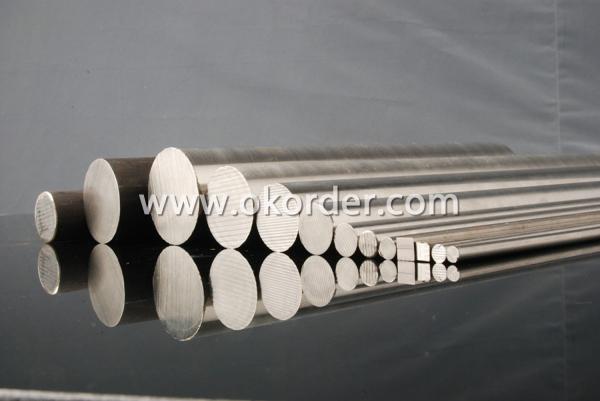
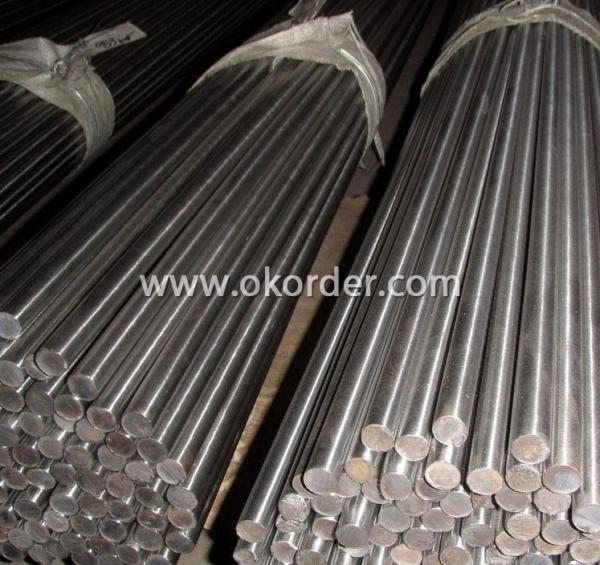
- Q: What is the difference between cold rolled and hot rolled stainless steel bars?
- The main difference between cold rolled and hot rolled stainless steel bars lies in the manufacturing process and the final product's properties. Cold rolling involves passing stainless steel through a series of rollers at room temperature. This process results in a harder and stronger material with a smooth finish. Cold rolled stainless steel bars have improved dimensional accuracy, tight tolerances, and a bright surface appearance. They are commonly used in applications where precise measurements, such as in the automotive and aerospace industries, are required. On the other hand, hot rolling involves heating stainless steel at high temperatures and then passing it through rollers to shape it into the desired form. Hot rolled stainless steel bars have a rougher surface finish and may have slight variations in dimensions. The hot rolling process also causes the stainless steel to lose some of its strength, making it less suitable for applications that require high strength and precision. In terms of cost, cold rolled stainless steel bars tend to be more expensive due to the additional processing steps involved. However, the improved properties and aesthetics make them a preferred choice in many industries where quality and accuracy are paramount. In summary, the main differences between cold rolled and hot rolled stainless steel bars are the manufacturing process, surface finish, dimensional accuracy, and strength. Cold rolled bars offer better dimensional precision and a smoother finish, while hot rolled bars are more cost-effective but have a rougher surface and may have slight variations in dimensions.
- Q: What are the applications of stainless steel bars in the aerospace industry?
- Stainless steel bars play a crucial role in the aerospace industry due to their exceptional properties and various applications. Firstly, these bars are extensively used in the construction of aircraft frames and structural components. Their high strength-to-weight ratio ensures the durability and integrity of the structure, while their resistance to corrosion and heat makes them suitable for withstanding the extreme conditions faced during flight. Stainless steel bars are also employed in the manufacturing of engine components such as turbine blades and exhaust systems. The bars' excellent heat resistance and ability to maintain their mechanical properties at high temperatures make them ideal for these critical applications. Additionally, stainless steel bars are utilized in the production of landing gear systems, where their strength and resistance to fatigue are essential for ensuring safe landings. Furthermore, the aerospace industry relies on stainless steel bars for the fabrication of fasteners and fittings. These bars provide the necessary strength and corrosion resistance required for joining different components securely. As safety is of utmost importance in aerospace, the use of stainless steel bars ensures the reliability and longevity of these connections. Moreover, stainless steel bars find applications in the aerospace industry for their electrical conductivity and magnetic properties. They are used in electrical systems and wiring due to their ability to efficiently conduct electricity, ensuring reliable power distribution throughout the aircraft. Stainless steel bars with magnetic properties are utilized in sensors and navigation systems, enabling accurate readings and precise control. In summary, stainless steel bars are indispensable in the aerospace industry for their strength, corrosion resistance, heat resistance, electrical conductivity, and magnetic properties. They contribute to the construction of aircraft frames, engine components, landing gear systems, fasteners, and electrical systems. The utilization of stainless steel bars in these applications ensures the safety, reliability, and performance of aerospace vehicles.
- Q: What are the standard dimensions of stainless steel bars?
- The standard dimensions of stainless steel bars vary depending on the type and grade of stainless steel being used, as well as the application requirements. Typically, stainless steel bars are produced in various shapes including round, square, hexagonal, and flat bars. For round bars, the standard diameter ranges from 1/16 inch to 12 inches, with common sizes being 1/4 inch, 1/2 inch, 3/4 inch, 1 inch, and 2 inches. The length of round bars can vary, but it is commonly available in 12 feet or 20 feet long. Square bars usually have equal sides and range in size from 1/8 inch to 4 inches. Common sizes for square bars are 1/4 inch, 1/2 inch, 3/4 inch, and 1 inch. The length of square bars is typically the same as round bars, with 12 feet or 20 feet being common. Hexagonal bars have six sides and are available in sizes ranging from 1/8 inch to 3 inches. Common hexagonal bar sizes are 1/4 inch, 3/8 inch, 1/2 inch, and 3/4 inch. The length of hexagonal bars is also commonly 12 feet or 20 feet. Flat bars have a rectangular cross-section with varying thicknesses and widths. The thickness typically ranges from 1/8 inch to 1 inch, and the width can vary from 1/2 inch to 12 inches. The length of flat bars is usually 12 feet or 20 feet. It is important to note that these dimensions are general guidelines and may vary depending on the manufacturer and specific requirements of the project. It is always recommended to consult the manufacturer or supplier for accurate and up-to-date information on the standard dimensions of stainless steel bars.
- Q: Can stainless steel bars be used in marine vessel construction?
- Yes, stainless steel bars can be used in marine vessel construction. Stainless steel is highly resistant to corrosion and can withstand the harsh saltwater environment, making it a suitable material for marine applications.
- Q: Can stainless steel bars be used in the retail aftermarket?
- Yes, stainless steel bars can be used in the retail aftermarket. Stainless steel is a versatile and durable material that is resistant to corrosion, making it suitable for various applications in the retail industry. It can be used for displays, shelving, fixtures, and other retail structures, providing strength and a modern aesthetic. Stainless steel bars are also easy to clean and maintain, making them a practical choice for the retail aftermarket.
- Q: What are the different types of stainless steel bars used in medical devices?
- There are several different types of stainless steel bars used in medical devices, each with its own unique properties and characteristics. Some of the most common types include: 1. 316L Stainless Steel: This is a low-carbon variation of the 316 grade stainless steel, which is known for its excellent corrosion resistance and high strength. It is widely used in medical devices due to its biocompatibility and resistance to pitting and crevice corrosion. 2. 304 Stainless Steel: This is another commonly used stainless steel grade in medical devices. It is known for its versatility, good corrosion resistance, and ease of fabrication. It is often used in medical instruments, implants, and surgical tools. 3. 17-4 PH Stainless Steel: This type of stainless steel is precipitation-hardened, which means it gains its strength through heat treatment. It offers a combination of high strength, good corrosion resistance, and good mechanical properties. It is often used in orthopedic implants and other structural components. 4. 420 Stainless Steel: This grade of stainless steel is known for its high hardness and wear resistance. It is often used in the manufacturing of surgical instruments, such as scalpels and forceps, where sharpness and durability are crucial. 5. Nitinol: While technically not a stainless steel, Nitinol is a nickel-titanium alloy that exhibits unique properties, such as shape memory and superelasticity. It is often used in medical devices, including stents and orthodontic wires, due to its biocompatibility and ability to return to its original shape after deformation. These are just a few examples of the different types of stainless steel bars used in medical devices. The selection of the appropriate grade depends on factors such as the specific application, desired mechanical properties, and corrosion resistance requirements.
- Q: Can stainless steel bars be coated with a protective film?
- Stainless steel bars have the capability of being coated with a protective film. The main objective behind administering a protective film onto these bars is to safeguard them against corrosion, scratches, and other potential damages that might arise during their transportation, storage, or installation processes. This film plays the role of a shield, separating the surface of the stainless steel from external factors like moisture, dirt, and chemicals, thus maintaining the bars' overall appearance and quality. Applying and removing this protective film is a convenient process, guaranteeing the bars' protection until they are ready to be utilized.
- Q: Can stainless steel bars be used in wind turbine structures?
- Certainly, wind turbine structures can indeed utilize stainless steel bars. Stainless steel, known for its exceptional durability and resistance to corrosion, is an excellent choice for outdoor and challenging settings like wind turbine installations. The robustness and structural soundness of stainless steel bars make them perfectly suited for bearing the weight and load of wind turbine components. Moreover, stainless steel possesses a remarkable fatigue strength, essential for enduring the continuous and repetitive stress caused by wind forces on wind turbines. Furthermore, stainless steel bars can be tailored and crafted to meet the precise design specifications of wind turbine structures, guaranteeing a dependable and enduring solution.
- Q: Are stainless steel bars suitable for construction applications?
- Yes, stainless steel bars are suitable for construction applications. They offer excellent strength, durability, and corrosion resistance, making them ideal for various structural components and reinforcement in buildings, bridges, and other construction projects.
- Q: Are stainless steel bars suitable for the production of food processing equipment?
- Yes, stainless steel bars are suitable for the production of food processing equipment. Stainless steel is known for its excellent corrosion resistance, hygienic properties, and durability, making it a preferred material in the food industry. It is easy to clean, maintains its appearance over time, and does not react with food or alter its taste. Additionally, stainless steel bars can be easily shaped and fabricated into various equipment components, meeting the stringent requirements of food processing applications.
Send your message to us
Stainless Steel Bright Bar
- Loading Port:
- Tianjin Port
- Payment Terms:
- TT or L/C
- Min Order Qty:
- 25MT m.t.
- Supply Capability:
- 4000MT Per Month m.t./month
OKorder Service Pledge
OKorder Financial Service
Similar products
Hot products
Hot Searches
Related keywords
